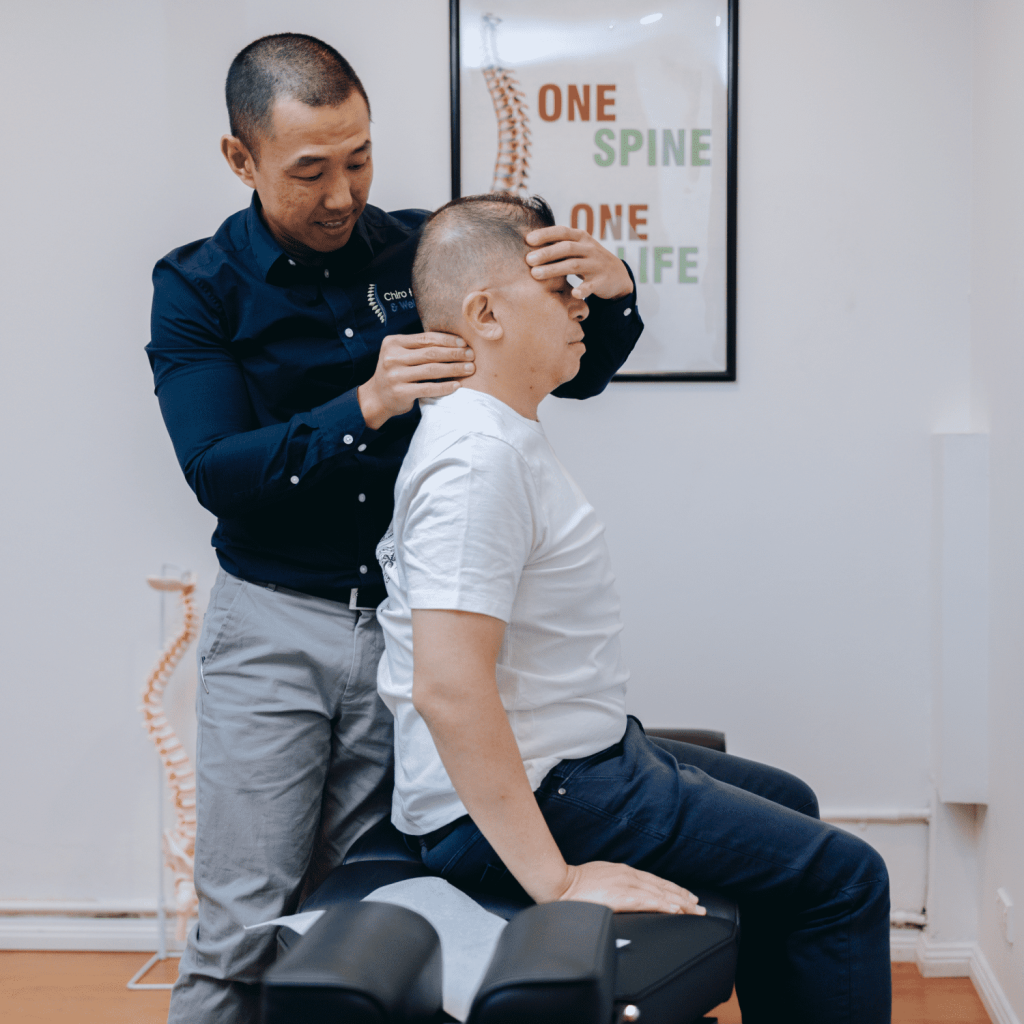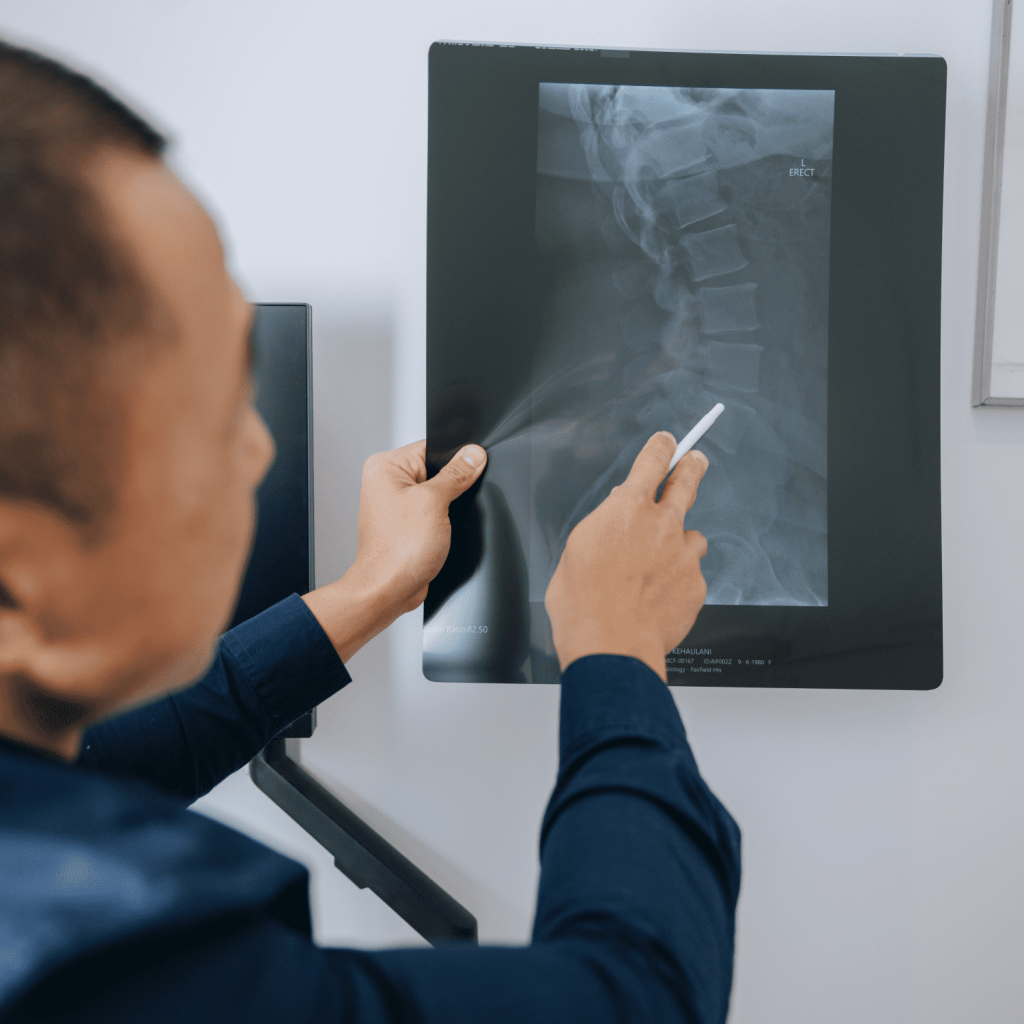Neck / Shoulder Pain
Overview
Neck and Shoulder is an extremely broad topic and can include any of the common symptoms which include:
- Neck tension & Shoulder tension
- Neck stiffness and reduced neck movement
- Acute neck pain (torticollis or wry neck)
- neck and shoulder pain itself
Before we can understand what is happening to the neck and shoulder when under strain, it’s important we understand how the neck and shoulder should function under normal circumstances.
When we look at the spine from the front or behind it should be straight. The shoulders should be even and the head should be level with the horizon. When we look from the side, there should be a C shaped curve to the neck so that the head sits on top of the shoulders and is not too far forward nor backward. The shoulders themselves should not be rolled forwards. The upper back or thoracic spine has a powerful influence on the neck and shoulder alignment and problems with too much forward curve of the upper back can throw the neck anterior and roll the shoulders forward, making them both susceptible to pain or injury.

Neck pain of a musculoskeletal source can be attributed to the muscles themselves, joint strain (ligament in origin) and from disc problems.
Disc Bulge/Herniation
Disc problems in the neck are relatively common, with symptoms often including referral of pain, pins and needles or numbness into the shoulder and down the arm into the fingertips. The location of the referral is indicative of the level of the disc problem. The types of disc problems may include disc bulge, disc protrusion and disc prolapse. X-ray is a good starting point with MRI providing the best imaging.
Disc problems are often a result of long standing stress on the neck and patients generally complain of an extensive history of neck issues before they present to us with a possible disc problem. Chiropractic care offers a conservative approach and is a worthwhile pursuit before considering more radical surgical options.
Joint Strain
Joint Strain is probably the more common source of pain for many of the neck problems we see in the clinic. The joint is wrapped by ligamentous tissue which is tough and has the ability to cope with load and stress. It has less blood supply than muscles, hence it appears whitish in colour, compared with muscles which are reddish, due to the blood content. The downside for ligaments though, is that they can often take longer to heal compared with muscles as the blood supply provides vital nutrients, oxygen and blood cells. Patients presenting with joint strain or ligament strain may have acute pain in the form of a wry neck or torticollis, or chronic pain in the form of stiff, painful and restricted neck range of motion. There can be minor referral of pain from the ligament, but this rarely moves past the upper back and shoulder. As much as ligaments are tough and able to deal with load, all tissue has a point at which it will fail. In the case of ligament or joint strain it tends to occur as a result of longstanding pressure and strain, repetitive movements, and stress on the neck. As much as the pain of a torticollis comes on acutely, there is often more longstanding history behind the symptom. Joint and ligament issue respond well to Chiropractic care both from immediate pain relief, but in also addressing the predisposing factors and causes of neck pain.
Muscle strain
Muscle strain and muscle tension around the neck and shoulders is a common complaint. When looking at muscles as the source of pain, it is always important to consider and address the cause. More often than not muscles are a reaction to something going on with the neck movement or neck posture. Muscles are designed to support and stabilise the neck and with ideal neck alignment the muscles consume the least amount of energy. As we shift off our normal alignment the muscles are required to do more work in order to keep us upright. Hence they can be fatiguing or under constant stress in compensation. Patients will often report massage helps, but does not fix the problem and that the muscle tension or spasm returns. Chiropractic care at CHIRO HEALTH AND WELLNESS is aimed at not only settling the symptoms related to muscle tension, but to ultimately address the cause in order to create a longer term solution.
In looking at neck issues it is important to consider the following:
- Sleeping position and posture
- Occupational posture and repetitive movements
- The amount of time on technology, including laptops and mobile phones
- Stress levels
For more information on best sleep positions, please visit https://www.sleep.org/articles/best-sleep-position/
Chiro Health & Wellness
When presenting to CHIRO HEALTH AND WELLNESS with neck or shoulder pain, our consultation begins with a thorough history and examination. Following our initial assessment, we will work out what the next steps are, particularly in relation to additional testing and assessment they may help with the diagnosis. This may include xrays at the basic level. Sometimes we refer out for an MRI or CT scan if required.
Once we have a complete picture of the problem and a working diagnosis we can then determine if Chiropractic care is the right approach. Of course, if we are not able to assist, we will recommend the right practitioner for you.
Chiropractic care for neck and shoulders may involve specific neck adjustments, postural exercises, rehabilitation exercises as well as addressing the lifestyle issues or recurring habits and patterns that contribute to the problem.


Get your FREE copy
5 Things To Avoid When In Pain
Stop damaging your back and start taking care of it with this FREE report. Download it today.

